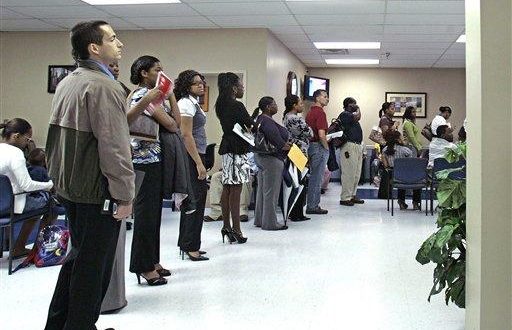Americans Not in Labor Force Exceed 93 Million for First Time; 62.7% Labor Force Participation Matches 37-Year Low
Published on April 3rd, 2015
Ali Meyer
April 3, 2015
CNSNews
(CNSNews.com) – The number of Americans 16 years and older who did not participate in the labor force–meaning they neither had a job nor actively sought one in the last four weeks–rose from 92,898,000 in February to 93,175,000 in March, according to data released today by the Bureau of Labor Statistics.
That is the first time the number of Americans out of the labor force has exceeded 93 million.
Also from February to March, the labor force participation rate dropped from 62.8 percent to 62.7 percent, matching a 37-year low.
Five times in the last twelve months, the participation rate has been as low as 62.8 percent; but March’s 62.7 percent, which matches the participation rate seen in September and December of 2014, is the lowest since February of 1978.
 BLS employment statistics are based on the civilian noninstitutional population, which consists of all people 16 or older who were not in the military or an institution such as a prison, mental hospital or nursing home.
BLS employment statistics are based on the civilian noninstitutional population, which consists of all people 16 or older who were not in the military or an institution such as a prison, mental hospital or nursing home.
In March, the civilian noninstitutional population was 250,080,000 according to BLS. Of that 250,080,000, 156,906,000 — or 62.7 percent — participated in the labor force, meaning they either had or job or had actively sought one in the last four weeks.
Of the 156,906,000 who did participate in the labor force, 148,331,000 had a job and 8,575,000 did not have a job but actively sought one. The 8,575,000 are the unemployed. They equaled 5.5 percent of the labor force—or the unemployment rate of 5.5 percent (which matched the unemployment rate seen in February 2015).
According to the BLS, the aging of the baby boom generation is a key factor affecting the labor force participation rate:
“The baby boomers’ exit from the prime-aged workforce and their movement into older age groups will lower the overall labor force participation rate, leading to a slowdown in the growth of the labor force,” explains the BLS.
“In 2000, baby boomers were aged 36 to 54 years and were in the group with the highest participation rates: the prime-aged group 25 to 54 years old. The participation rate for women in this group was 76.7 percent and for men was 91.6 percent, so that the overall participation rate of the group was 84.0 percent. The participation rate of the next-older age group, that 55 years and older, was 32.4 percent, so the difference between the two age groups was 52 percentage points. With the passage of every year after 2000, a segment of the baby-boomer population passes into the 55-years-and-older age group and thus moves from a group with a high participation rate in the labor force to an age category with a much lower particiption rate, causing the overall participation rate to decrease,” states BLS.





